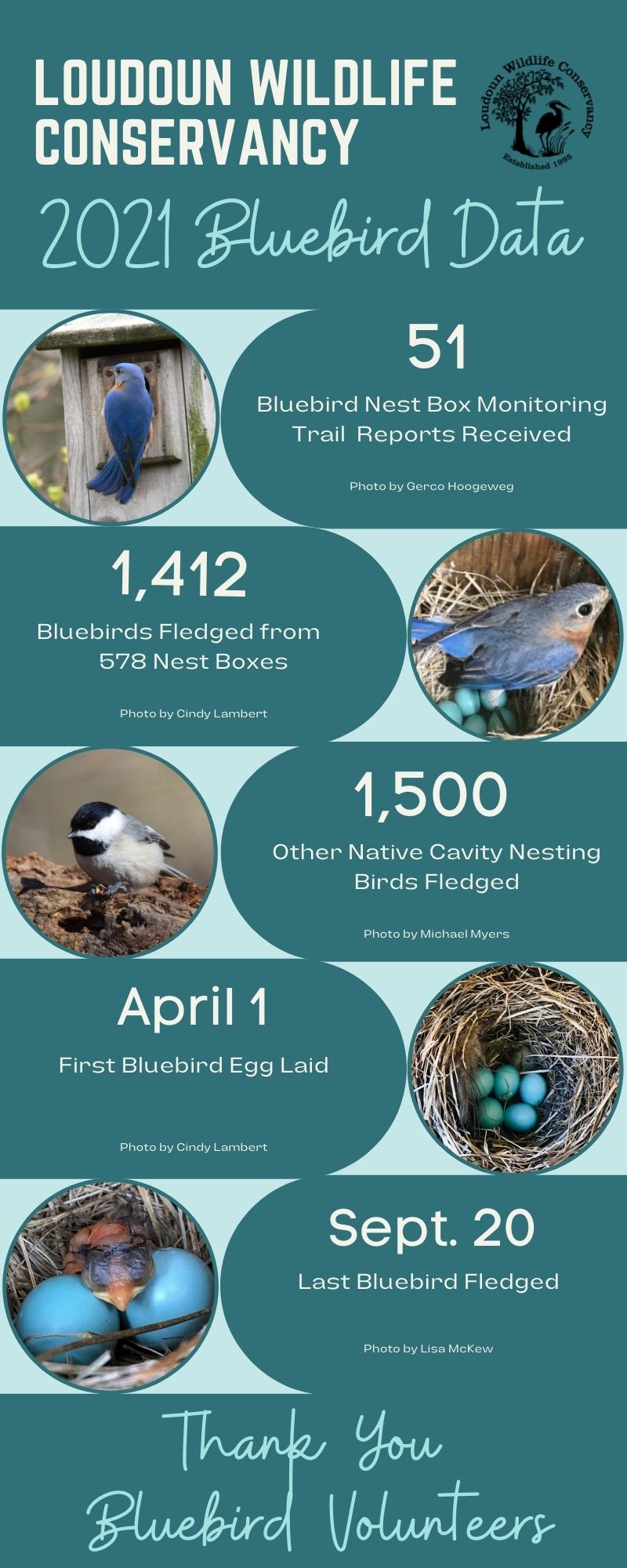The Bluebird Nestbox Monitoring Program wrapped up for the year, and the 2021 data (see infographic to the right) reveals the ongoing success of this program in helping our native cavity-nesting birds. Contrary to popular belief, the nestboxes are not just for Bluebirds. Other native birds that use the boxes include Tree Swallows, Chickadees, Titmice, and House Wrens.
Our program supports the work of the Virginia Bluebird Society (VBS) by establishing nest box trails throughout Loudoun County, monitoring them weekly during the season and then reporting our data to them. According to VBS, by the 1970s the Eastern Bluebird population reduced by as much as 90 percent because of a decline in the amount of tree cavities available for nesting due to construction and development. Increased competition from non-native birds, such as House Sparrows, also played a role in the decline. House Sparrows continue to be the most common predator to Bluebird nests. These non-native birds not only displace Bluebirds and other cavity-nesting birds, but they also kill them.
The Bluebird Monitoring Program is Loudoun Wildlife’s largest program with 170 volunteers monitoring over 50 trails. The boxes are monitored weekly March through August/September. The Bluebird season begins in February with a kickoff program that all are welcome to attend. It is a great opportunity to learn about monitoring nest boxes and how to volunteer to participate in this program.
Many thanks all our Trail Leaders and Monitors for making the 2021 season a success and we look forward to working with you again in 2022.


